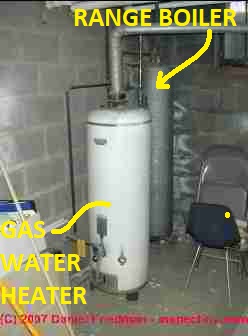Direct Fired Heater Carbon Monoxide

The products of combustion carbon dioxide co 2 carbon monoxide co nitrogen dioxide no 2 aliphatic aldehydes and water vapor are discharged into the makeup air stream and supplied to the building or process.
Direct fired heater carbon monoxide. A direct fired heating system is typically a device that uses the lower heating value of the fuel to heat the air photos 1 and 2 examples of horizontal rooftop and vertical ground mounted direct fired units. Having a thorough understanding of all of the differences between these two heater types will ensure you choose the optimal solution for each project. A direct fired heater works similary to an oven. Direct fired heaters are both more efficient and less expensive than indirect fired heaters.
As a result carbon monoxide and hydrogen go to atmosphere or worse mix with tramp air outside the combustion chamber and burn where it is not desirable. Generally direct fired heaters are used on construction sites outdoor applications or warehouses. Direct fired heaters applications. The heat is transferred directly to the product in process.
Proper ventilation is required to avoid buildup of gases such as carbon monoxide. On the contrary indirect heaters provide 100 dry and clean air and can operate in closed spaces. However there are some cases where an indirect fired heater is the better choice. In addition to the combustion adding humidity and carbon monoxide to the environment.
Figures 1 and 2 show diagrams of non recirculating direct gas fired ahus and figure 3 illustrates a recirculating direct gas. However there are some cases where an indirect fired heater is the better choice. In addition since the air is emissions free operators can use duct systems to transfer warm air from an indirect fired unit to other nearby spaces. These fumes are generated from a variety of sources including direct fired open flame salamander type heaters and other equipment operating within the building envelope.
Indirect fired heaters do not produce carbon monoxide carbon dioxide or nitrogen dioxide so they are safe to use in tight spaces although they still need an exhaust outlet. Direct fired heaters are both more efficient and less expensive than indirect fired heaters. In either case fuel is wasted and emissions increase. Table 1 upper limits for combustion gas emissions from direct fired units and result ing space concentrations 2 3 4.
Adds moisture and carbon monoxide into the air. Combustion by products depending on a building s intended use direct fired. Direct fired heaters cannot be used in a tightly sealed structure unless windows and doors can be opened for air exchange.













































